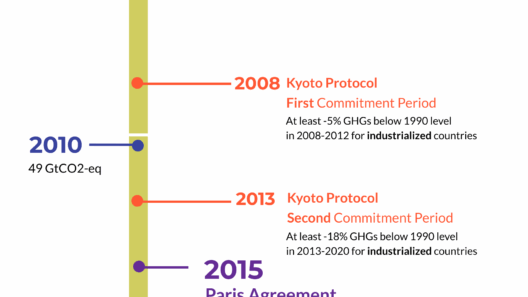Dairy farming is not merely an agricultural practice; it embodies a complex interplay between environmental conditions, animal welfare, and sustainable practices. As the global demand for dairy products escalates, understanding the climatic requirements for raising dairy cows has become imperative for sustaining the industry’s future. This article delves into the various climates in which dairy cows can thrive, exploring the optimal conditions, challenges, and innovations that influence dairy farming.
To effectively raise dairy cows, it is essential to recognize that these animals are not only dependent on the climate but also on the interactions of various factors such as humidity, temperature, and seasonal changes. The adaptability of dairy cattle plays a significant role, yet it remains crucial to select the appropriate breeds and management practices to meet their needs.
Determining the ideal climate for dairy cows involves analyzing several factors that affect their health, productivity, and overall welfare. Here, we will explore the conditions across different climatic zones, emphasizing what environments best support dairy farming.
Understanding the Temperate Climates
Temperate climates, characterized by moderate temperatures and distinct seasonal changes, offer some of the most suitable environments for dairy cows. Regions such as Northern Europe, the Northeastern United States, and parts of Australia exemplify this climatic category. The seasonal variability in these zones is less extreme than in polar or tropical regions, allowing cows to experience a more balanced diet throughout the year.
The cooler seasons promote a reduction in heat stress among cows, enhancing their milk production and overall health. During summer months, the implementation of shade structures and ample ventilation becomes crucial to ensure that dairy cows remain comfortable and productive. Additionally, these regions often benefit from rich pastures and sufficient rainfall, which are vital for forage cultivation.
Optimal temperatures for dairy cows usually hover between 60°F and 70°F (15°C to 21°C). If temperatures rise significantly above this range, cows may experience heat stress, leading to decreased milk yield and reproductive issues. Therefore, dairy farmers in temperate climates must adapt their husbandry practices to mitigate these challenges, utilizing strategies like providing cooling systems or altering feeding schedules to coincide with cooler parts of the day.
Challenges of Tropical Climates
Tropical climates present an entirely different set of challenges for dairy farming. Characterized by high temperatures and humidity, these environments can significantly stress dairy cows if not properly managed. Regions such as Central Africa, Southeast Asia, and parts of Latin America struggle with maintaining ideal conditions for dairy production due to the adverse effects of heat stress.
Heat stress in dairy cows can lead to lower appetite, decreased milk production, and even heightened susceptibility to disease. In tropical climates, the ambient temperatures can often exceed 90°F (32°C), requiring farmers to adopt innovative approaches to cope with these conditions. Effective management practices include ensuring adequate access to shade and water, utilizing cooling techniques such as fans or misters, and breeding for heat-tolerant cattle.
Moreover, tropical dairy farming calls for an understanding of localized forage species and their nutritional content, as maintaining proper herd nutrition is essential in offsetting the challenges posed by extreme weather. Tropicalization of dairy breeds is also becoming increasingly popular, where crossbreeding is employed to produce animals that are better suited to withstand high temperatures while maintaining milk quality.
Successes in Arid Regions
Contrary to common perceptions, dairy cows can also be successfully raised in arid and semi-arid regions, such as parts of the Middle East and southwestern United States. However, optimal dairy farming in these climates demands strategic planning and investments in different infrastructure. Water scarcity, extreme temperatures, and harsh environmental conditions create a unique set of challenges, but innovative farming techniques can lead to successful dairy operations.
Utilizing drought-resistant forage varieties and implementing effective irrigation systems can significantly enhance the quality of the farm’s feed supply. Moreover, providing adequate shade and cooling mechanisms is critical to address thermal stress among the cows. Many dairy farmers in arid regions have successfully adopted rotational grazing strategies, ensuring that pastures are not overused and can regenerate more efficiently during the limited rainy seasons.
Emerging technologies, such as precision agriculture and smart farming, also hold promise in improving dairy farming sustainability in these challenging climates. Using sensors to monitor cattle behavior and health, as well as implementing data-driven decision-making for feeding and breeding practices, can greatly enhance productivity while ensuring the welfare of the animals.
The Influences of Climate Change
As climate change continues to reshape global weather patterns, the dairy industry faces impending uncertainties. Increased frequency of extreme weather events, shifting agricultural zones, and the threat of new diseases necessitate adaptable and resilient farming practices. It is essential for dairy farmers to remain informed about climate trends to implement proactive measures that safeguard their livestock and optimize productivity.
Ultimately, understanding the climatic needs of dairy cows is a multifaceted endeavor requiring an appreciation for their biological needs and the external environmental pressures they face. Whether in temperate, tropical, or arid regions, aligning farming practices with the local climate can ensure healthier, productive herds while also contributing to sustainable dairy production on a global scale. By embracing innovative strategies, dairy farmers can demonstrate resilience in the face of climate challenges, securing both animal welfare and economic stability.








